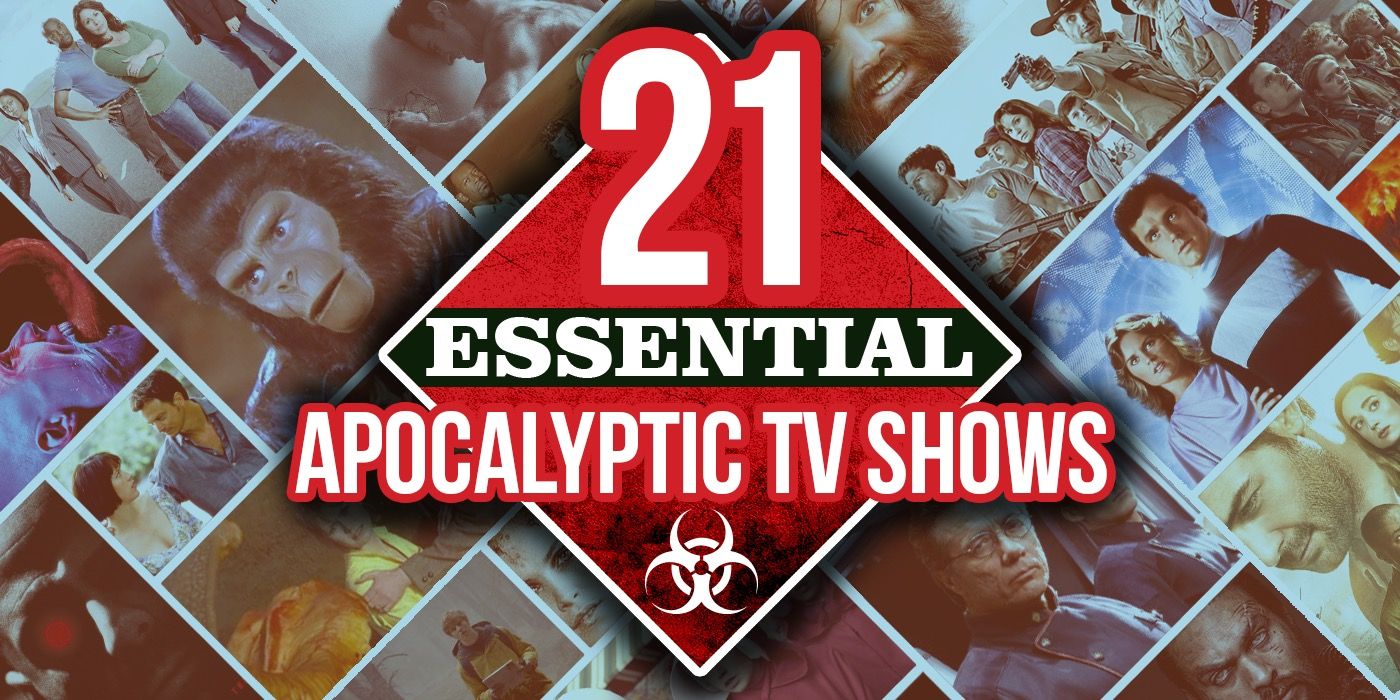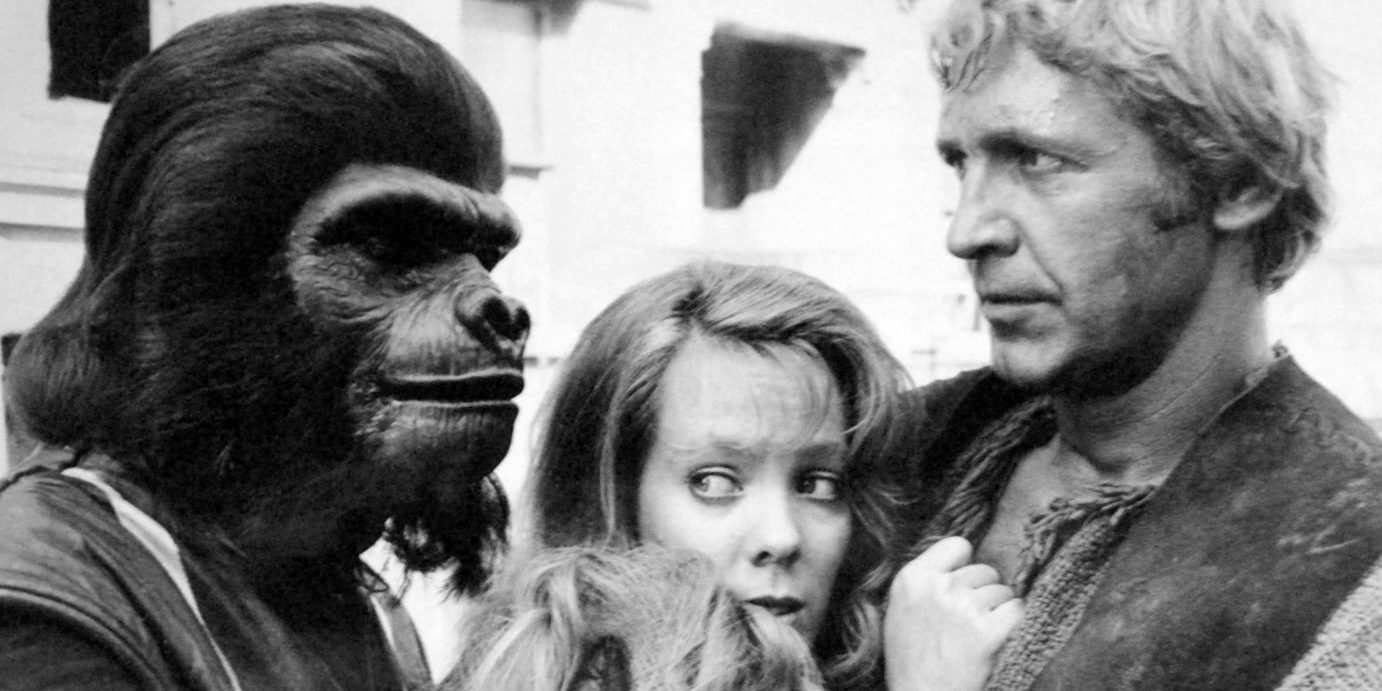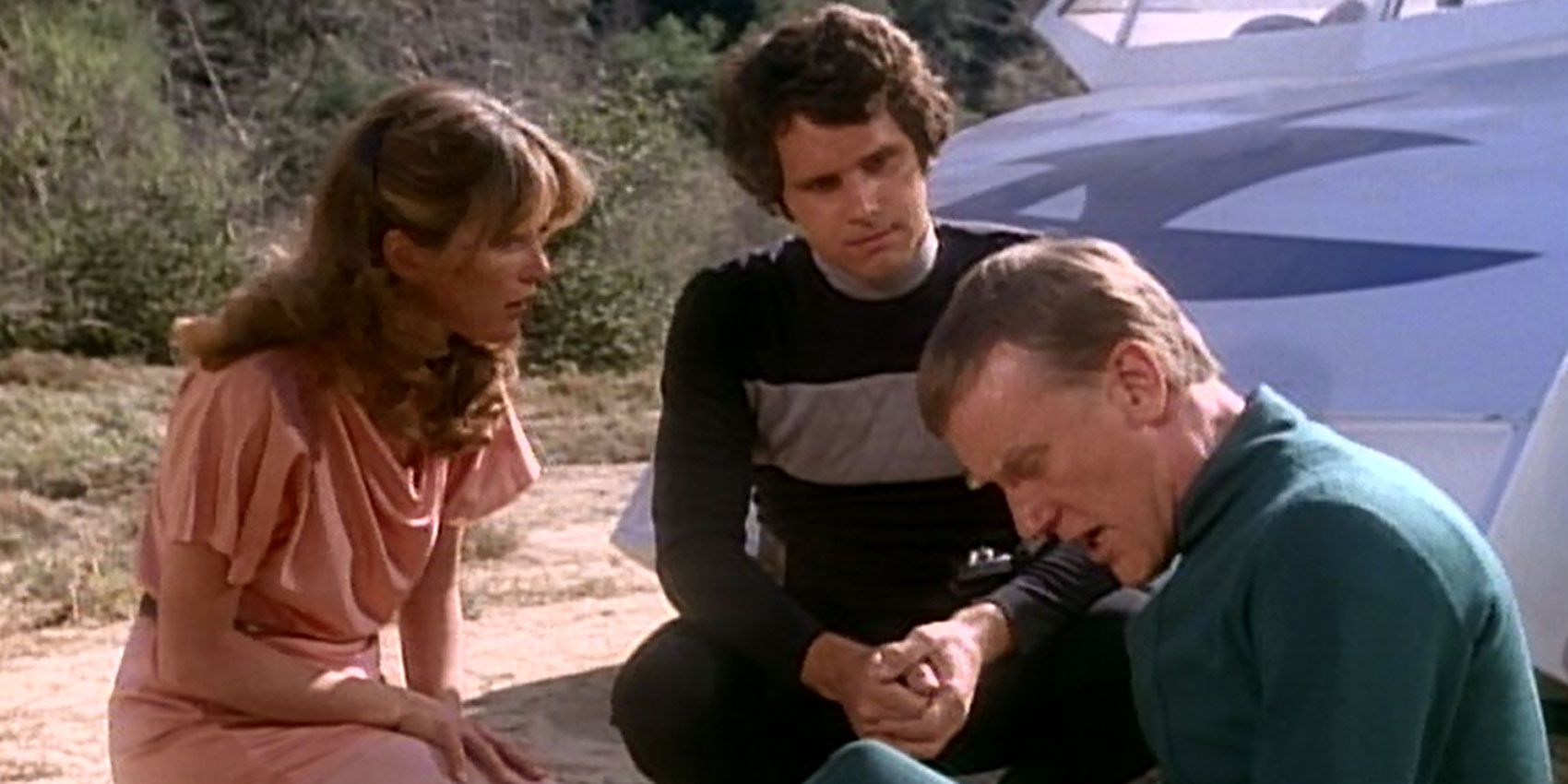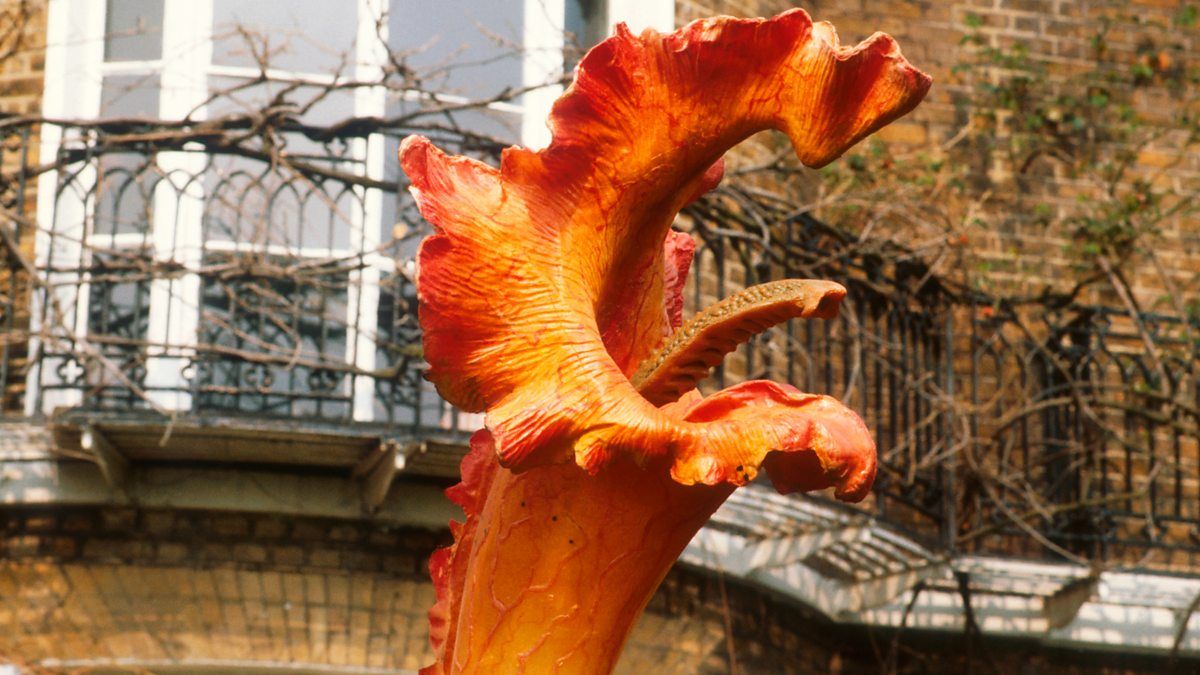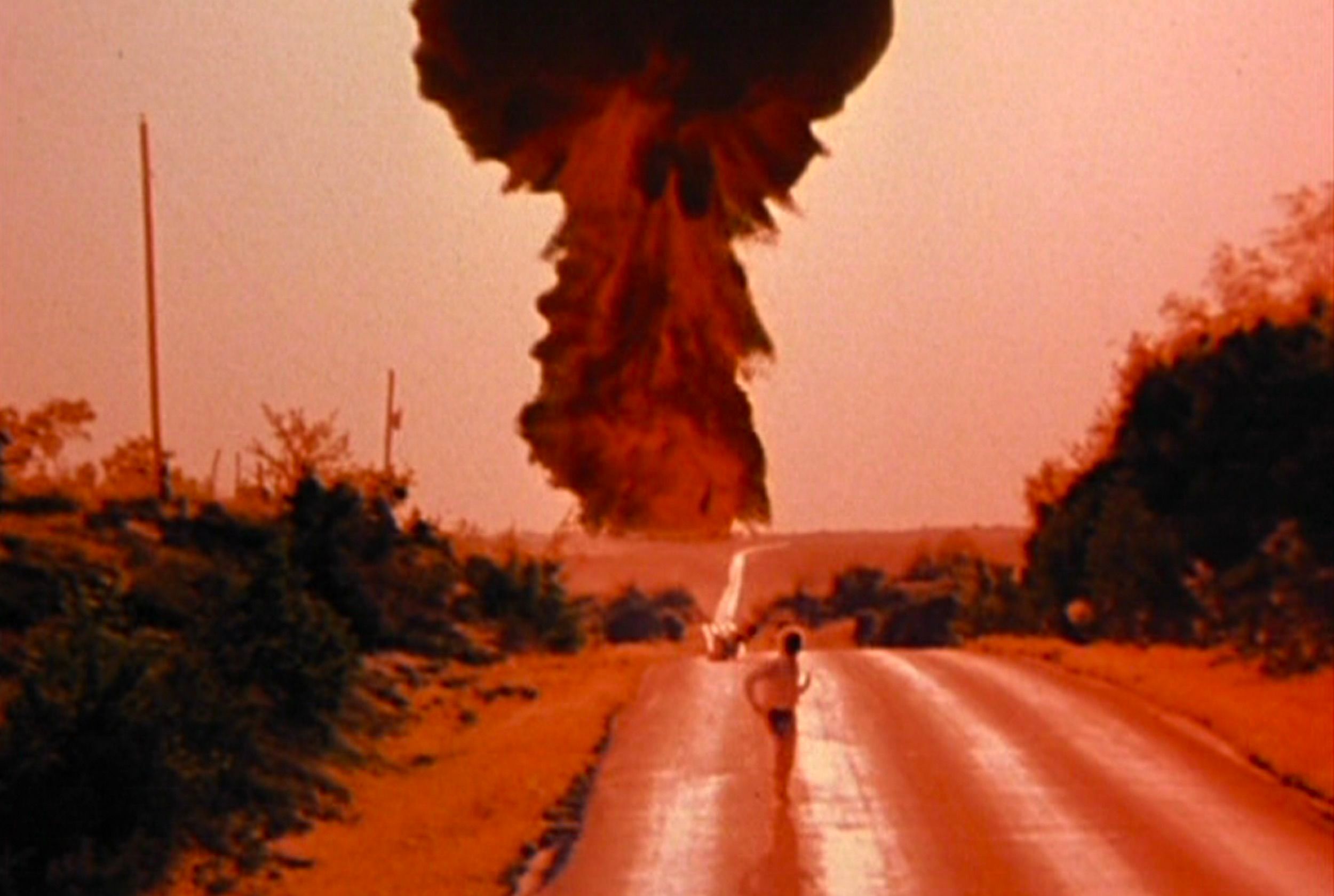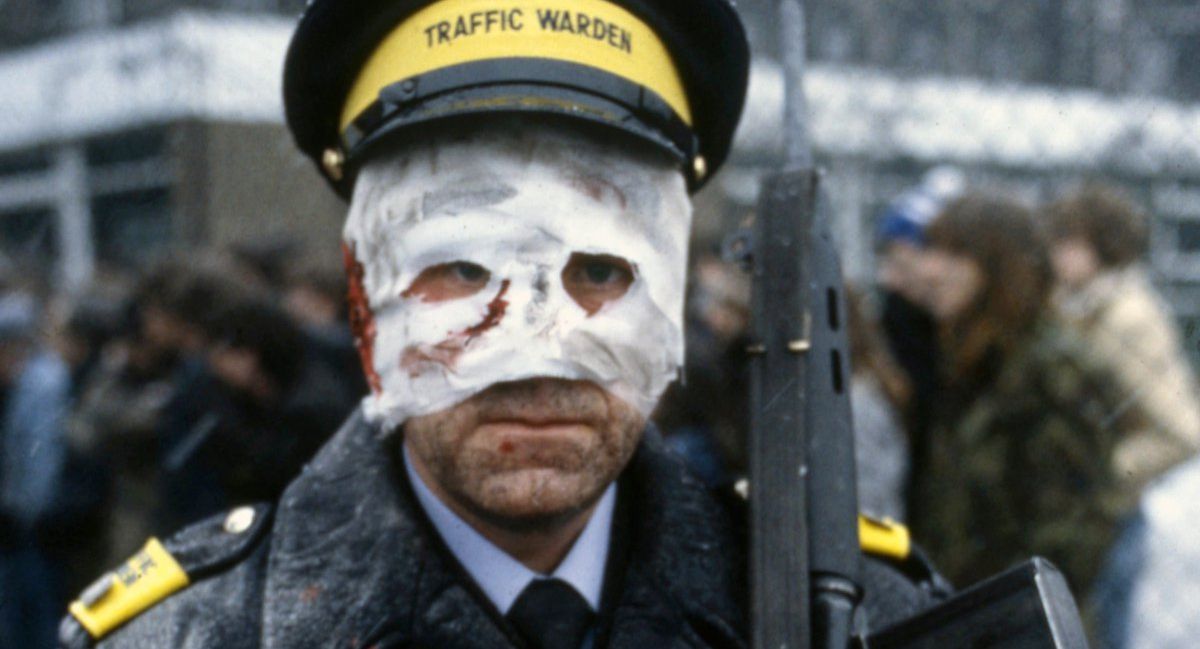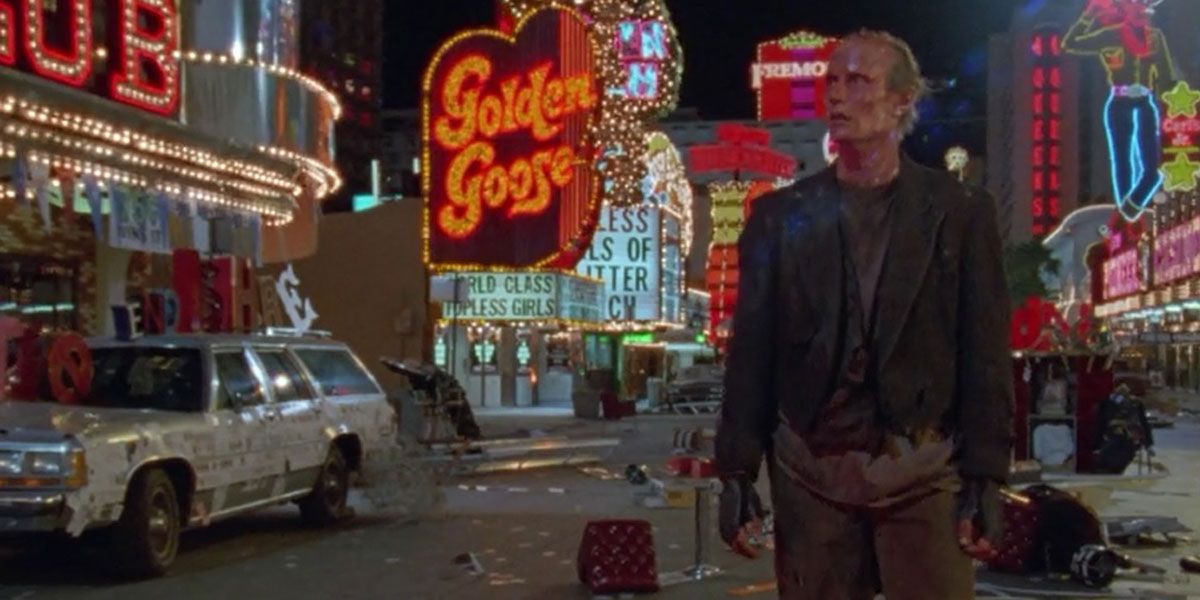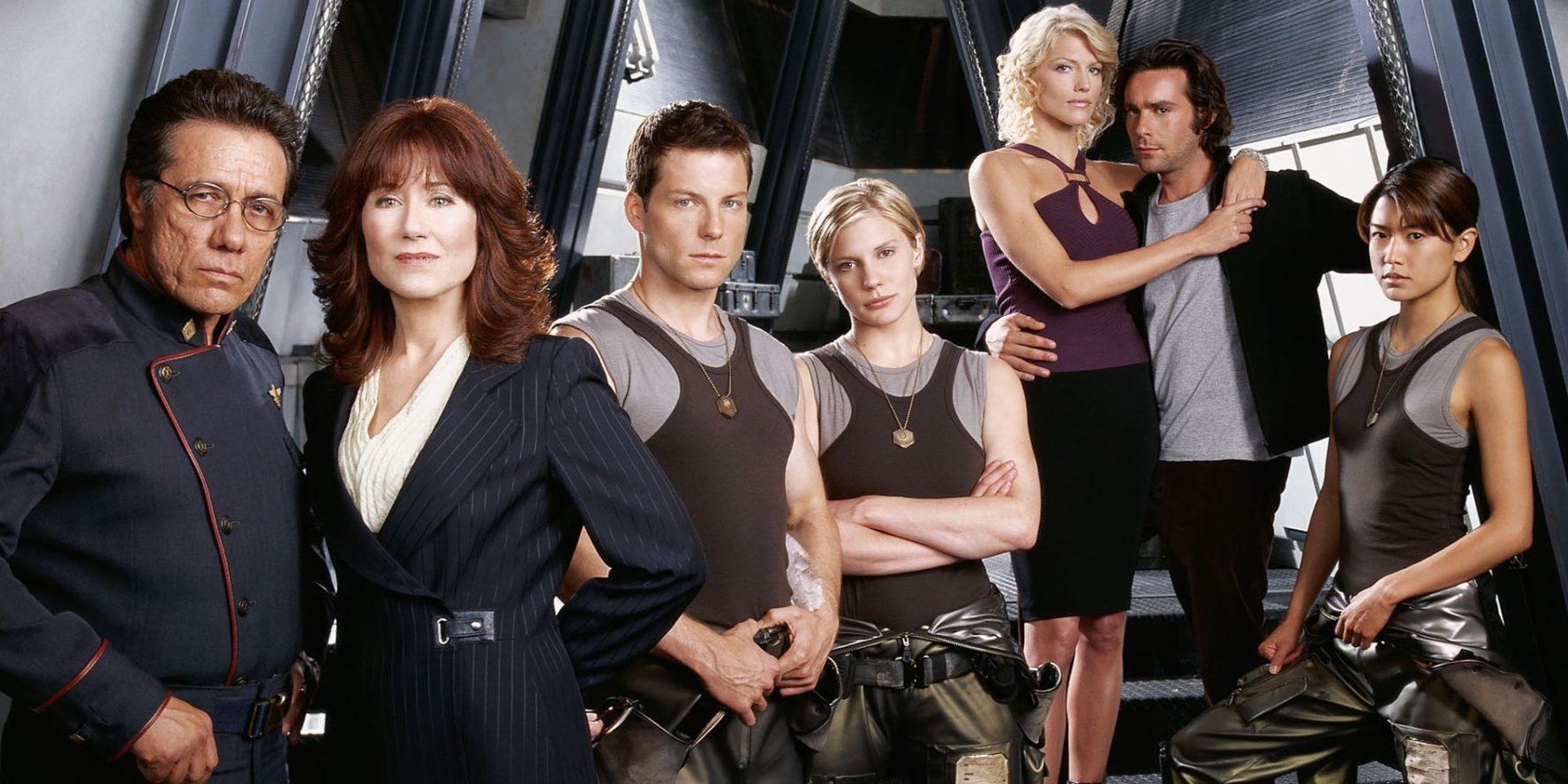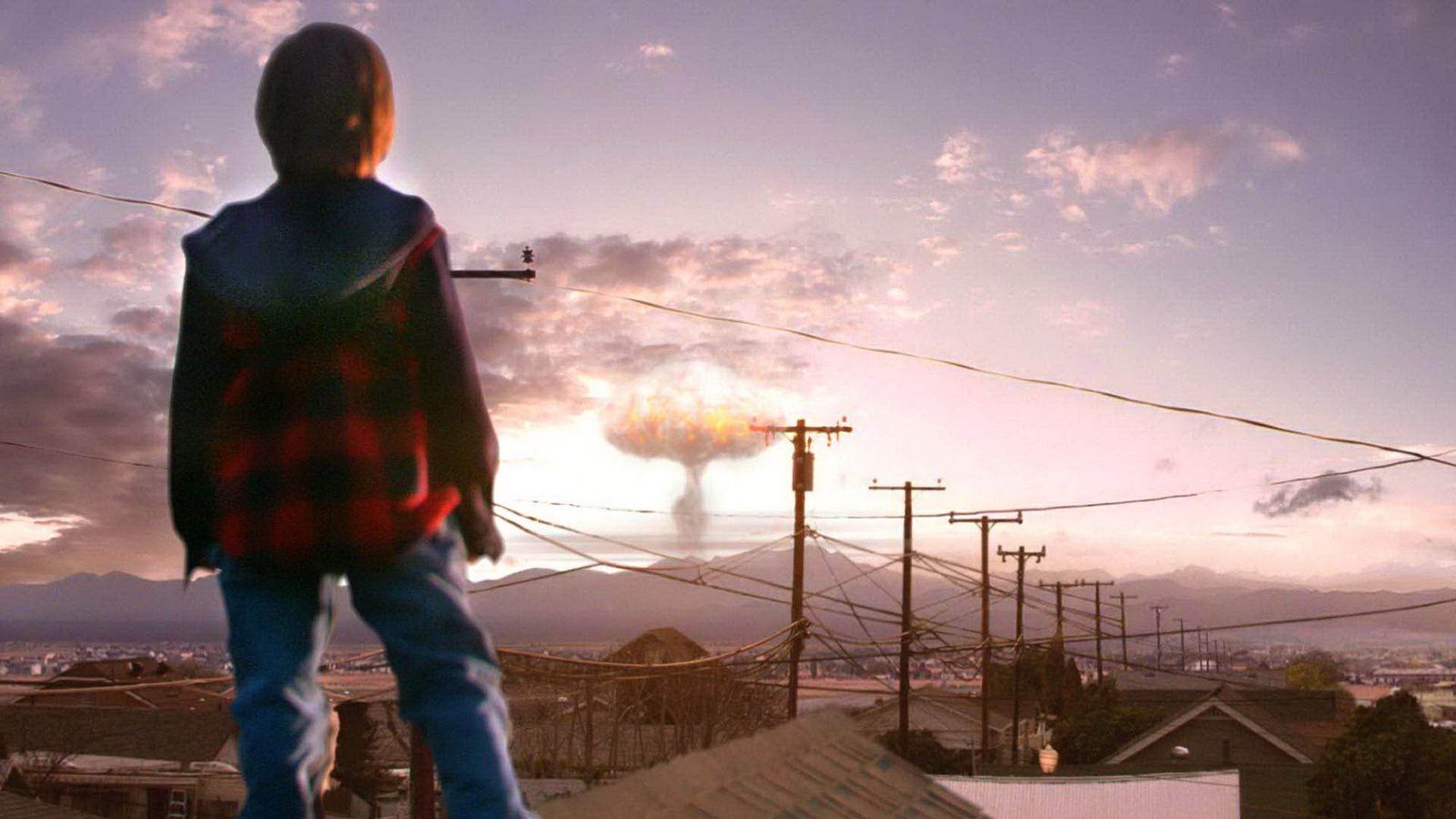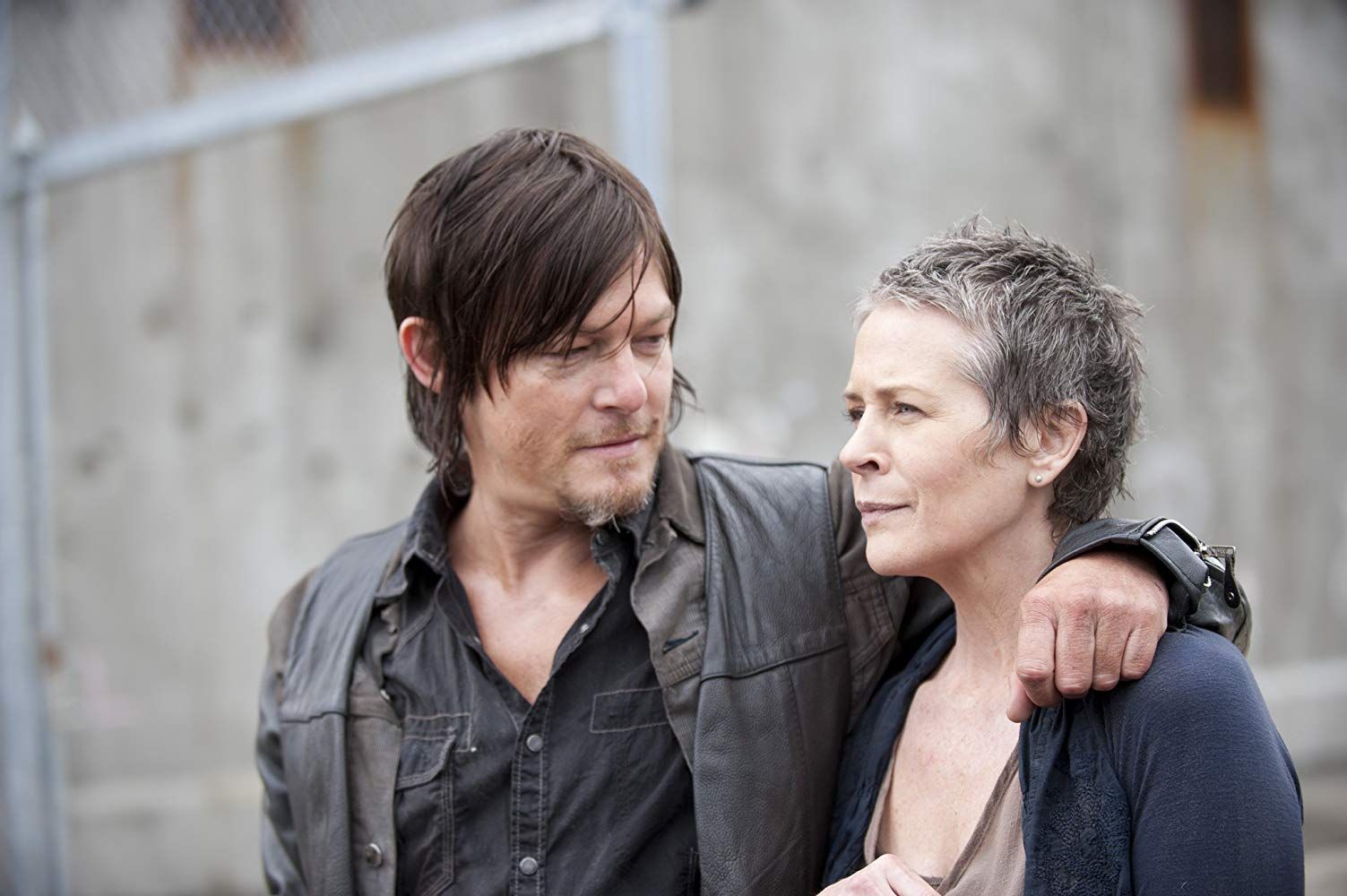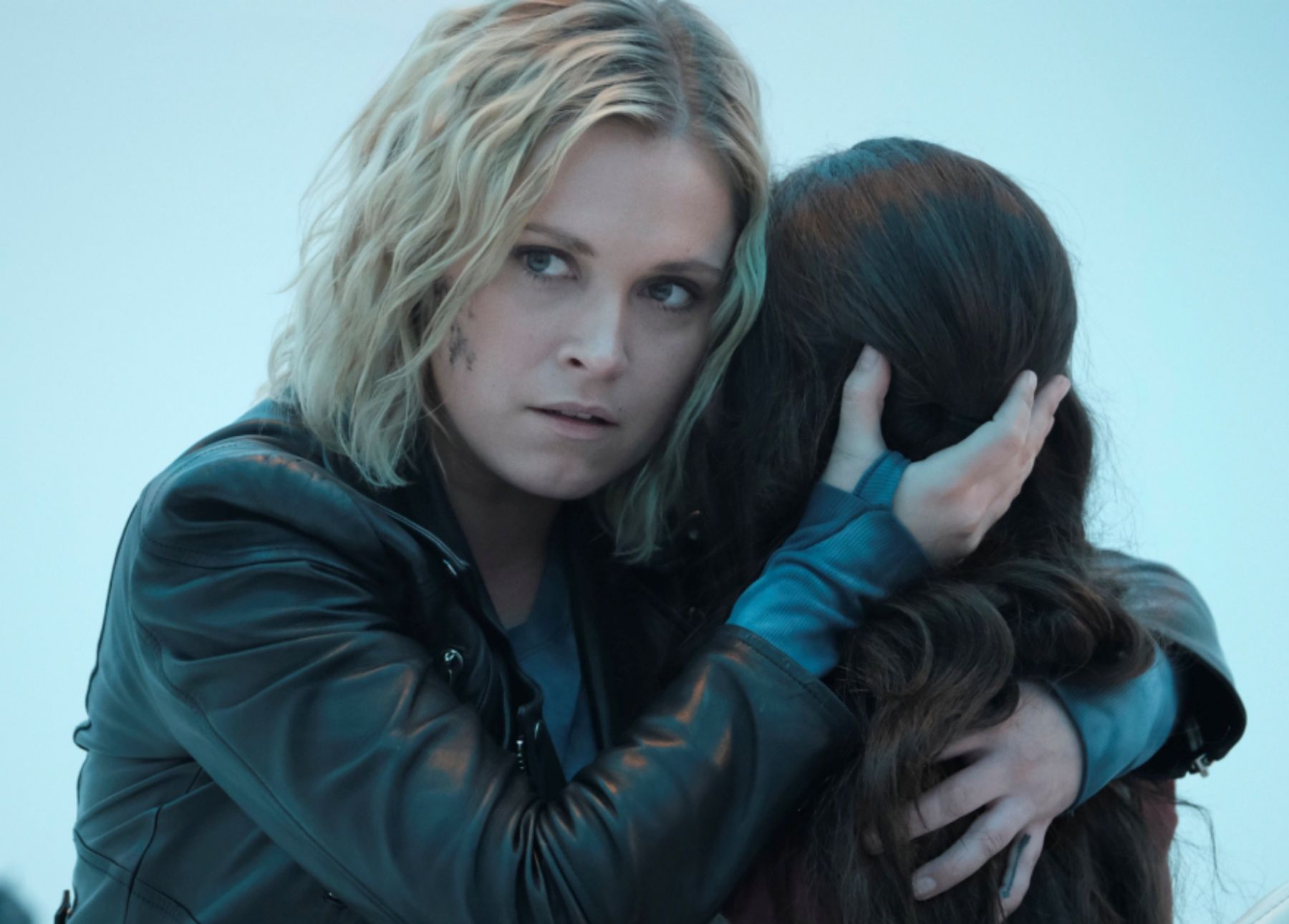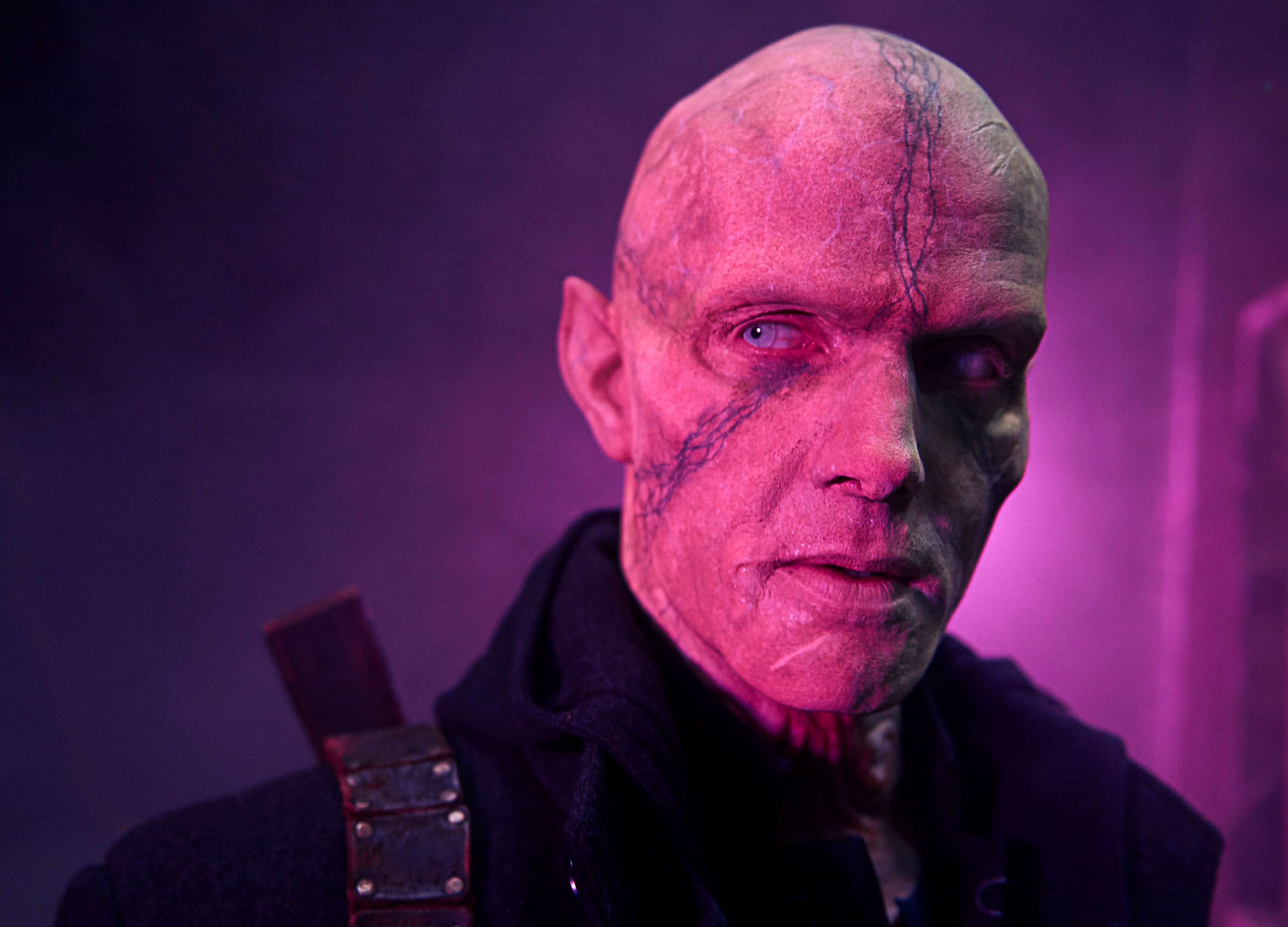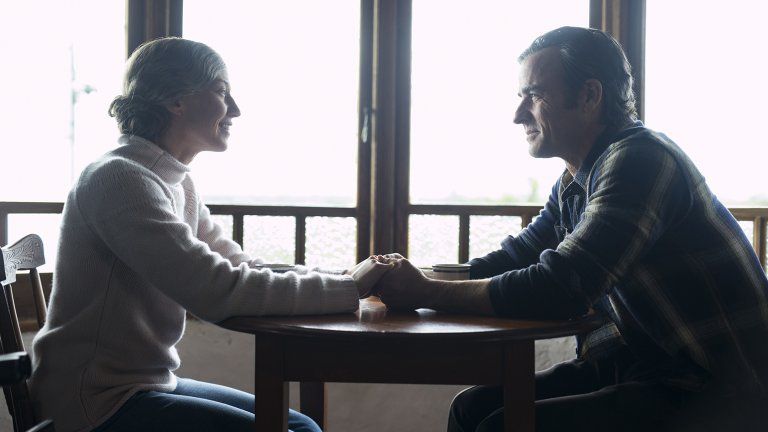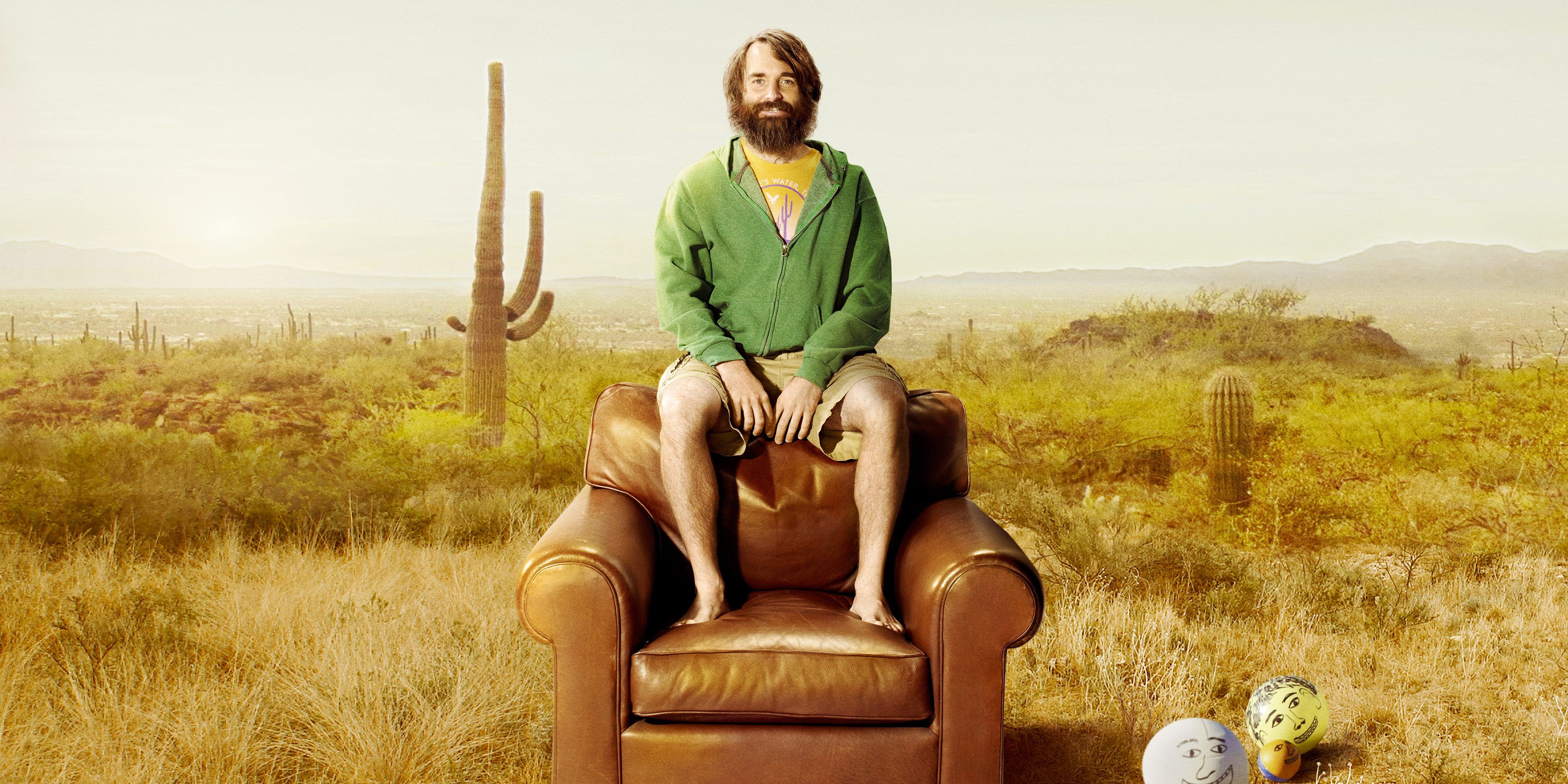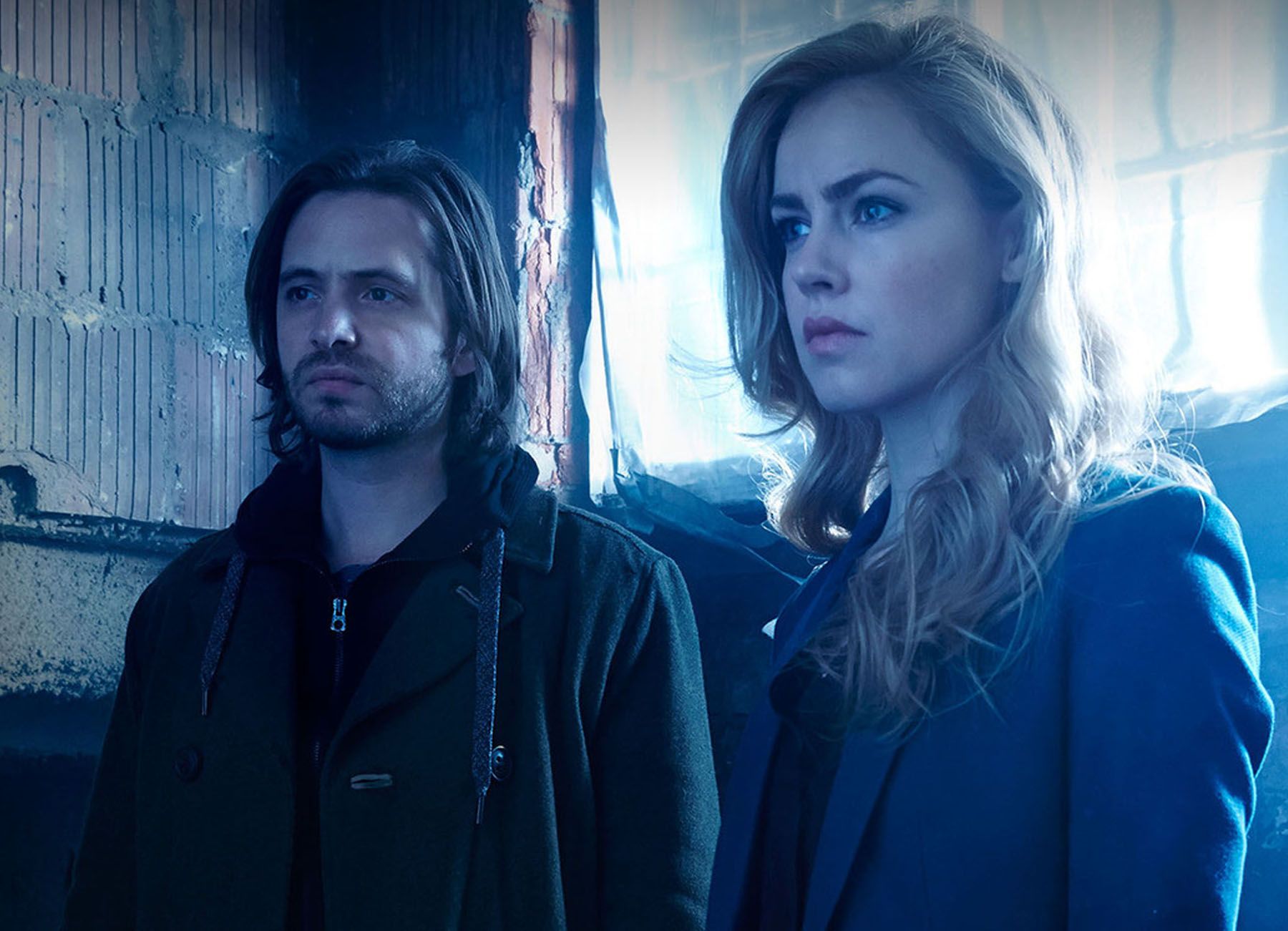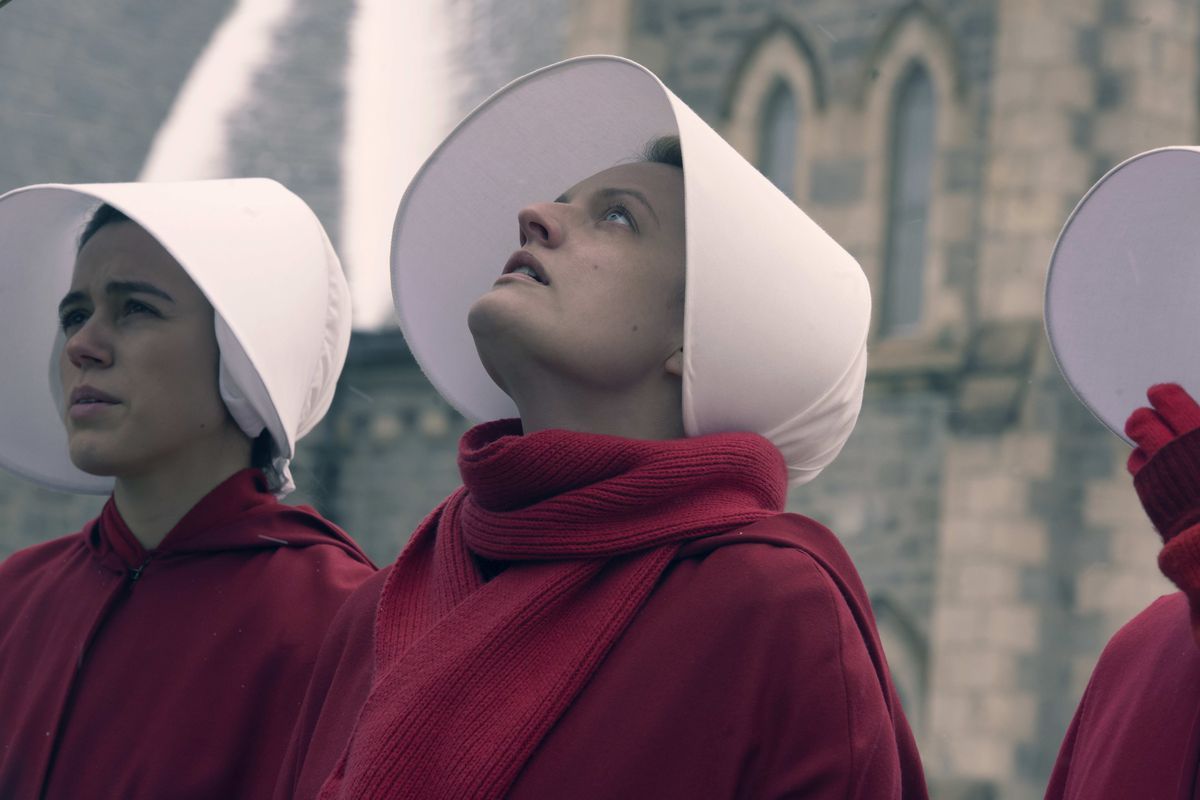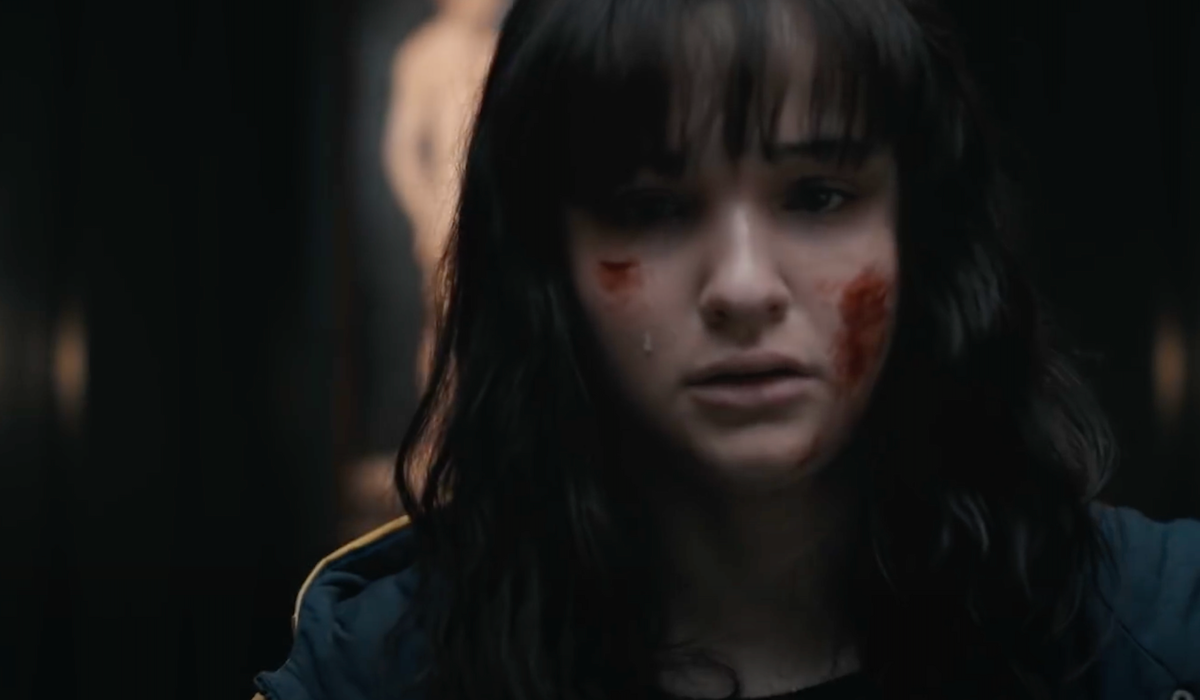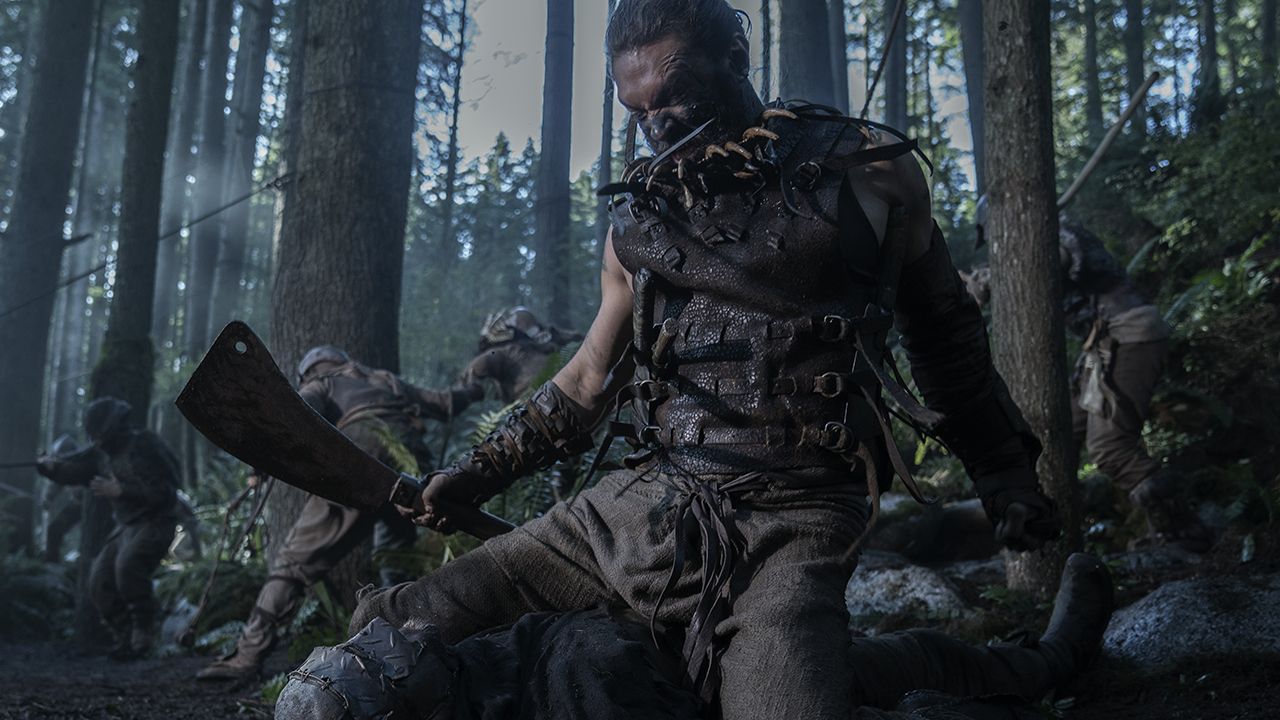The end of the world doesn’t always happen with a bang; on television, it might be a disease, nuclear bomb, or environmental disaster. In Snowpiercer, the global extinction event is a manmade solution to the climate crisis that goes horribly awry. Returning this week for its second season (it has already been renewed by TNT for a third), the passengers of the perpetually moving locomotive are confronted by survivors aboard another train. Based on the 1982 French graphic novel Le Transperceneige (which was adapted by Bong Joon-ho in 2013), the inhabitable frozen wasteland provides the backdrop for a society in conflict.
Apocalyptic scenarios date back to the Bible, and the widespread destruction is often an allegory for something else. The decimation of a population can be caused by a sudden mass disappearance, reproductive issues, nuclear war, a virus, or another catastrophic event; the Atomic Age heavily influenced science fiction and the sprawling Cold War’s impact can be seen in a number of the entries below.
In recent years, the television apocalypse has taken many different forms, whether based on existing IPs or original material — representing escapism that suggests resilience in the face of adversity, the selections below include drama, horror, sci-fi, and even a sitcom dealing with the end of the world. This isn't meant to be a list signifying what's "best", but rather how to get a baseline of television knowledge in the apocalypse genre. Maybe you will discover something new, or even want to revisit an old favorite.
Planet of the Apes (1974)
Based on the French novel La Planète des singes by Pierre Boulle, the Planet of the Apes TV adaptation went back to the origins of the 1968 movie. It might have been a case of Planet of the Apes fatigue, as Roddy McDowall’s crossover from the big to the small screen only lasted the original 14-episode order by CBS — five movies released in quick succession preceded it. The following decade, several of these episodes were spliced and edited to make five made-for-TV movies telling the story of two astronauts (a third died in the crash) who are caught in a time warp and end up on a version of Earth dominated by humanoid apes. Befriended by sympathetic ape Galen (McDowall), Colonel Alan Virdon (Ron Harper) and Major Peter J. Burke (James Naughton) must figure out how to survive this hostile environment and a world that is no longer recognizable. Episodes tackled issues including chemical warfare and the controversial use of Agent Orange in the Vietnam War, and “The Liberator” was rumored to have been pulled from the original scheduled date due to the incendiary subject matter.
Logan’s Run (1977-1978)
Set in the 24th century, a nuclear war has wiped out much of the world’s population in the TV version of the dystopian movie of the same name. Survivors live in blissful ignorance until the age of 30 when they are killed in the Carousel extermination ceremony that promises reincarnation. Sandmen pursue those who escape the City of Domes including former Sandman Logan 5 (Gregory Harrison) and Jessica 6 (Heather Menzies) who flee in the pilot. Searching for a mythical place called the Sanctuary they are assisted by an android called REM (Donald Moffat) who comes from a city run by robots. Not only did production use footage from the 1976 movie, but the sleek Sandman silver turtleneck and black costume design were also utilized – talk about a sustainable production! Other standout futuristic developments include the hovercraft style vehicles that were the work of custom car manufacturer Dean Jeffries (he also custom-designed the moon buggy from Diamonds Are Forever). While the cars and Sandmen get to rock a futuristic design, Jessica’s flimsy pink ensemble is a retro barely-there mini-dress – neither practical nor camouflage-worthy against the desert terrain. This is another case of CBS canceling a series based on a movie after 14 episodes.
The Day of the Triffids (1981)
Rick Grimes (Andrew Lincoln) is far from the first character to wake up in a hospital after an apocalyptic event, which has become a familiar science-fiction trope (see also, 28 Days Later and The Stand). Adapted from John Wyndham’s 1951 novel, Bill Masen’s (John Duttine) fortuitous medical emergency meant he did not witness the meteorite shower that blinded most of the world’s population. Even before the Triffid plants begin to attack, society has broken down in the six-part co-production between the BBC and Australia's ABC. Unlike Steve Sekley’s cheesy monster-focused ‘60s film version, the 1981 production is faithful to the novel and captures Cold War fears coupled with a philosophical exploration of what makes a civilization.
Impressive practical effects capture the menace of this scenario with visual effects designer Steve Drewett basing his design on parasitic plants. This decade also marked a renewed increase in tensions between the Soviets and the US, which is reflected in the apocalyptic television mini-series and made-for-TV movies trend. Another loose adaptation was made by the BBC in 2009 starring Dougray Scott, Eddie Izzard, Brian Cox, and real-life mother and daughter Vanessa Redgrave and Joely Richardson, but the 1981 version is still the definitive telling of Wyndham’s cautionary tale.
The Old Men at the Zoo (1983)
Rather than nuclear war dominating the plot, the five-part BBC satirical drama based on Angus Wilson’s 1961 novel follows Wilson’s foregrounding of zoo politics while danger lurks – in fact, the novel doesn’t even include the bombs. Set in 1970, after an ill giraffe kills a warden (hello, Zoo), the blame game begins between different departments. Taking the allegorical approach for the majority of the mini-series, the dangers posed by various animals and the actions taken (or not) by the arrogant men in charge are a clear nod to the precarious political situation – as well as mirroring the crumbling British Empire. The final episode shows the devastation after the bombs have hit and the broken society that resides within the ruins. This is a mostly forgotten mini-series, but its unusual pacing and structure set it apart from other atomic anxiety-laden projects from the period. In Susan Sontag’s “The Imagination of Disaster” she writes that “fantasy can do is to normalize what is psychologically unbearable, thereby inuring us to it.” She made this observation about science-fiction in the ‘50s and ‘60s, but the 1980s – including The Old Men at the Zoo – also tapped into this particular philosophy.
The Day After (1983)
Apocalyptic scenarios are not always allegorical and simply reflect the very real horror that could befall the planet if cooler heads do not prevail. One of the TV events of the decade, ABC’s The Day After drew an audience of 100 million Americans on a Sunday night in 1983. Showcasing a potential “What If?” scenario, this two-hour movie depicts full-scale nuclear war and the devastating impact it would have. Nicholas Meyer’s film doesn’t hold back, emphasizing the horrifying death and injuries that would occur if all went to hell. By focusing on several families, it portrayed the human cost, and while the dialogue is incredibly cheesy (and performances are over the top) it offered a direct antiwar. President Reagan screened the movie at Camp David and later told Meyer that this movie had an impact on him – in his diary at the time he noted it had “left me greatly depressed.” The Americans portrayed this TV event in the Season 4 episode “The Days After,” tapping into the overwhelming dread of the period as tensions bubbled between the ideologically opposed nations. The image of an FBI Agent watching alongside deep-cover KGB operatives doesn’t go unnoticed and the FX series effectively wields pop culture from this period to emphasize the deep battle scars.
Threads (1984)
BBC Director-General Alasdair Milne commissioned Threads after he watched the controversial 1966 pseudo-documentary War Games. Peter Watkins’ fictional portrayal of nuclear war was meant to air on British television, but was pulled from the schedule after pressure from the government who believed it would have a significant negative impact on viewers. Coming after the ABC portrayal of full-scale nuclear war, Threads also focuses on one location after the US and USSR have launched their arsenal of atomic weapons. Rather than only showing the immediate aftermath, this TV movie reveals the extent of the devastation a decade later. Nearly 40 years after it first debuted, the critical consensus is still overwhelmingly positive and Mick Jackson’s portrayal of a nuclear winter is a nightmare situation which is still hard-hitting. Praised for the “kitchen sink” realism in the dialogue and setting, this drama earned itself the accolade of “the night the country didn’t sleep” — and Ronald Reagan is also said to have screened this all-too-real look at nuclear annihilation.
The Stand (1994)
The CBS All Access adaptation of Stephen King’s beloved 1978 novel is currently airing, which also wisely takes the mini-series approach after years of movie production woes. But for many, this version is iconic. King’s 1,100-page tome (stretching to 1,400 pages for the uncut edition) pits a battle of good versus evil in a world that has been ravaged by a weaponized virus — called Captain Trips — that has killed 99 percent of the population. A clash between a community led by the 108-year-old Mother Abigail (Ruby Dee) against the insidious Randall Flagg (Jamey Sheridan) sets the scene for the four-part version that is relatively faithful to King’s text. Gary Sinise, Molly Ringwald, and Rob Lowe star in the Emmy-winning series.
Battlestar Galactica (2004-2009)
Whether it is a disease, an environmental disaster, or technology, the common thread connecting the apocalypse on television is humans. This is also the case in Battlestar Galactica after the Cylons evolved and rebelled against their inventors. In the distant future, civilization is now spread across planets in another star system known as the Twelve Colonies and what remains of the human race must try to find Earth in order to defeat the cybernetic race they created. Ronald D. Moore’s updated version of the 1978 series is a television sci-fi favorite which won over critics and fans alike during its four seasons on the air. Allusions to the War on Terror is another example of how genre holds a mirror up to current events — no matter how fantastical or futuristic the setting. Since BSG went off the air, there have been other efforts to explore this universe, and while spinoff Caprica was a prequel, which only ran for one season, and Battlestar Galactica: Blood & Chrome was also set before the TV series, Mr. Robot creator Sam Esmail recently teased the Battlestar series he is working on for Peacock will not be a reboot.
Jericho (2006-2008)
Rebuilding after a catastrophic event is a common apocalyptic TV theme and Jericho follows this model. After the residents of Jericho, Kansas witness a nuclear event in Denver, Colorado, they must piece together what has happened and adapt to survive. In total 23 cities have been hit across the US, which has wiped out power and communication. This isolation puts an emphasis on the community response that explores leadership, how to make do with limited resources, and the inability to trust those in power. Drawing on The Day After’s small-town setting, the political subtext had shifted from the Cold War to the War on Terror and George W. Bush’s second term. Perhaps most famous for the fan campaign that saw CBS renew it for a second season (after it had been canceled), but there were not enough peanuts to substantially increase ratings and it was canceled for a second time in 2008.
Survivors (2008-2010)
Several entries on this list tick the virus scenario that wipes out the majority of the world’s population, followed by survivors struggling to restore a semblance of control — while also dealing with the trauma of the event. This short-lived potent BBC series is a re-engineered take on Terry Nation’s 1975 series (and subsequent novelization) that saw a previously unknown form of influenza referred to as the “European Flu” have deadly and wide-reaching consequences. Adrian Hodges’ series came at a time when bird flu and SARS were a fresh reminder of a potential global pandemic, which, when viewed through a 2020 lens, feels prescient rather than fantastical.
The Walking Dead (2010 - present)
Kick-starting a decade filled with post-apocalyptic scenarios, the juggernaut that is The Walking Dead is one of the definitive zombie franchises. It has since spawned two spinoffs (Fear the Walking Dead and The Walking Dead: World Beyond) with two more expected after the original series wraps up after its 11th season this year (three additional movies are also in the works). Based on Robert Kirkman, Tony Moore, and Charlie Adlard’s comic book series, this narrative framework has provided an array of scenarios that suggest the real danger isn’t the mindless flesh-eating beings but other humans — another classic end-of-the-world challenge to overcome when society crumbles. Ratings have steadily declined since certain fan favorites made an exit, but there is no denying how impactful Rick Grimes (Andrew Lincoln) and friends have been on the TV genre landscape.
The 100 (2014-2020)
It has been 97 years since a nuclear war ravaged the planet and the remaining survivors are living on the Ark — a spaceship habitat that orbits the globe. To see if Earth is habitable, 100 adolescent delinquents are sent to investigate the potentially radioactive location. What’s the worst that could happen? It soon becomes clear they are not alone and several groups have managed to thrive over the last century, and the teens will have to fight for a world they have never lived in. This is a CW show, which means everyone is beautiful and romantic entanglements fuel the drama (alongside the dangerous mission). The series made it the impressive 100 episode total to match its name and concluded on this milestone moment.
The Strain (2014-2017)
Guillermo del Toro, Chuck Hogan, and Lost co-showrunner Carlton Cuse bring monster magic to the viral outbreak genre in this FX series that sees people infected by vampirism. Things begin simply enough, as Corey Stoll’s CDC doctor Ephiram Goodweather investigates an airplane full of dead passengers that landed at JFK. But what follows is New York City becoming a hotbed of bloodthirsty beings. Posing a threat to human existence, this gory series marries the supernatural with a deadly virus and served up a memorable eye worm advertising campaign that ticked all the disturbing boxes (billboards were removed after complaints).
The Leftovers (2014-2017)
Three years after two percent of the world’s population (or 140 million people) vanished in the blink of an eye, the residents of Mapleton, New York are still picking up the pieces of this still unsolved “Sudden Departure.” Damon Lindelof’s ambitious adaptation of executive producer Tom Perotta’s novel — that he wrote as a post-9/11 allegory — is an emotionally gutting (and satisfying) exploration of grief, trauma, and faith that included a blistering TV debut from Carrie Coon and star turns from Justin Theroux, Christopher Eccleston, Regina King, and Ann Dowd. Taking a global incident and dialing into the personal impact, rather than ever attempting to explain the why of this rapture-like event, made for an extraordinary and emotional three-season run.
Zoo (2015-2017)
Not all pandemics physically affect humans, but they can still be deadly as the wonderfully silly Zoo proved for three glorious seasons. James Wolk stars as Jackson Oz, a zoologist called in to help explain why animals have begun attacking humans across the globe. Vampire bats, lions, and an evil sloth — that can cause an earthquake by yawning — are some of the species wreaking havoc on an unsuspecting human population. The CBS procedural leaned into the ridiculous (see evil sloths and invisible snakes) and was a hell of a ride before it was canceled.
The Last Man on Earth (2015-2018)
It can be hard to find the humor in a virus that wipes out billions of people, but Will Forte’s sitcom managed to balance laughs with gut-punch moments in a world where very few people survived. Tandy (Forte) isn’t the easiest person to live alongside and as his group of survivors expands and shrinks, he puts most people’s patience to the test. In a post-apocalyptic world, you can’t be too picky about who you can rebuild society with and the revolving door of famous faces cameoing each season — a Season 3 flashback to the start of the pandemic with Kristen Wiig and Laura Dern is a highlight — adds conflict and dark humor to the series. Death lingers at every corner, and mental health is also a consideration in a storyline that reveals this is much more than fart jokes and paddling pools filled with margaritas. Canceled in its fourth season, the Fox series is a bright spark that is worth revisiting (yes, even during an actual pandemic).
12 Monkeys (2015-2018)
A virus is an apocalyptic trope that keeps on giving and in this loose adaptation of Terry Gilliam’s 1995 sci-fi movie, James Cole (Aaron Standford) is tasked with going back in time to stop the plague that will kill 93 percent of the world’s population. Traveling from 2043 to 2015, he has two years to stop the Army of the Twelve Monkeys from unleashing the virus. Cole is not alone in this quest to save seven billion lives, which sees virologist Dr. Cassandra "Cassie" Railly (Amanda Schull) join him in this mission to prevent the enigmatic organization from wreaking deadly havoc in the SYFY series. Things get extraordinarily more complicated as the show progresses, but the core mission of the series — to try to create a better world — is never lost.
The Handmaid’s Tale (2017 - present)
Margaret Atwood’s 1985 novel has become a symbolic rally cry in an era when reproductive freedoms are being threatened. The instantly-recognizable red cape and white bonnet, which costume designer Ane Crabtree brought to life in the Elisabeth Moss-starring series, have been worn across the globe by protestors. And while The Handmaid’s Tale's societal downfall is more insidious than some of the others featured here, the control of women’s bodies after the population begins to fall is a catastrophic scenario — only heightened in the aftermath of the Gilead revolution, as the fertility crisis persists and the Colonies have become a radioactive wasteland. But, ultimately, a political apocalypse is just as deadly and oppressive as a zombie virus or environmental disaster.
Dark (2017-2020)
Combining time travel and a nuclear apocalypse with melodramatic twists is a hard line to walk, but Dark creators Jantje Friese and Baran bo Odar deftly kept control of the century-sprawling plot. What begins with a German small town devastated by the disappearance and murder of children quickly becomes focused on the historical events of the location and the families who inhabit it. A nuclear power plant soon to be decommissioned becomes a ticking time bomb and the date of the forthcoming apocalypse looms. This is one of the most ambitious series on the list that also maintains its emotional tether — even when matters are spinning out of control.
The Rain (2018-2020)
The Danish YA Netflix original combines environmental concerns with a deadly pandemic. Rather than acid rain, the Scandinavian population is decimated by a rain-borne virus that has ties to a sinister corporation lingering in the shadows. Two siblings survive by hiding in a shelter for six years, and when they emerge the plan is to find their scientist father. However, Simone (Alba August) and Rasmus’ (Lucas Lynggaard Tønnesen) bond is put to the test when they end up on ideological opposing sides when it comes to a cure. Tapping into the teen conflict aspect makes this an ideal chaser to The 100.
See (2019 - present)
One of the first shows on the Apple TV+ roster got in on the apocalyptic action and Steven Knight’s series hopes to lure Games of Thrones fans — in part because of Jason Momoa’s leading role, in part because of the scale and propensity for wearing fur. Alfre Woodard plays Paris, the Alkenny tribe matriarch who becomes the foster mother to the first baby born with the ability to see since a plague caused all humans to lose their sight. Elements of Day of the Triffids and the H.G. Wells short story “The Country of the Blind” lay the foundation for this defining event, which drastically alters society. Season 1 left a lot of unanswered questions to be addressed when the delayed second season (due to the real-life global pandemic) finally hits the streamer.

